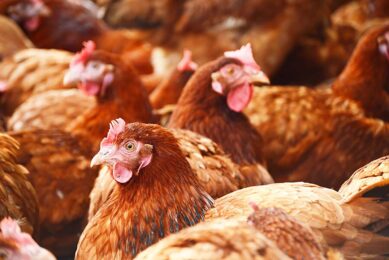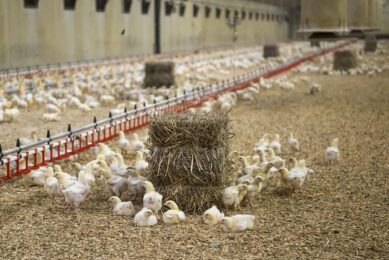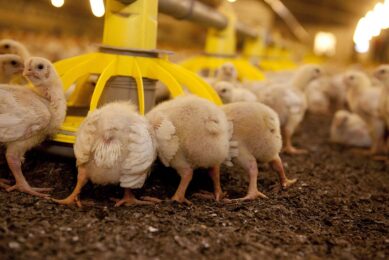Australia’s changing landscape of protein production

Animal agriculture is under increased scrutiny due to perceptions about the health, environmental and welfare aspects of animal-sourced protein. These institutional risks are driving industry change. A study by the Australian Farm Institute focuses on the implications for Australia’s agriculture sector in response to the opportunities and challenges of the emerging market for alternative proteins.
“The shift towards alternative proteins has gathered momentum over the past 18 months, with large-scale food retailers promoting plant-sourced meat to mainstream consumers,” said John Harvey MD of AgriFutures Australia, adding, “The research tells us that despite the trend towards alternative proteins, large opportunities exist for animal proteins into the future.”
Global meat consumption has increased by 58% from 1998 to 2018 to reach 300 million tonnes. In Australia, total meat consumption has seen a steady rise since the 1960s as the population has grown, though per capita consumption (>100kg per annum) has remained relatively stable. The dietary needs of a growing population will inevitably result in increased demand for protein. By 2030 the Australian population is forecast to be 29.17 million, an increase of 4.17 million from 2018.
A growing demand for protein
Global animal agriculture will struggle to supply the world’s growing demand for protein using the finite resources available in current production systems. Both animal and plant production will need to increase productivity to overcome this challenge. Investment in and production of alternative proteins such as insect proteins, meat, dairy, egg and fish analogues and cultured meat are showing increasing growth, although with a very small market share.
The proportion of the Australian population making all or almost all vegetarian food choices rose from 9.7% in 2012 to 11.2% in 2016. A 2019 survey reported that in addition to an approximate 10% of vegans/vegetarians, 12% of Australians identify as ‘meat-reducers’ and 20% as ‘flexitarians’.
While alternative protein substitution of animal protein will continue to increase in the next 10 years, the levels and rate of substitution will not present a material threat to the viability of animal agriculture by 2030. Producers of plant-sourced protein (e.g. pulses) also stand to gain from increased market share; however, new demand for animal-sourced protein from a rising population will outweigh any additional market share that alternative proteins may gain.
The protein palette will broaden in the coming years, with a fast growth of plant based meat substitutes. That was the main conclusion during the 100 year anniversary congress of processing equipment manufacturer Baader. Find out more…
Labelling a primary concern
The primary concerns arising from industry stakeholders related to the marketing and labelling of alternative protein products. It was noted that marketing of alternative protein products can be misleading and drive misconceptions about traditional animal-sourced protein sources. For example, a plant-sourced chicken meat analogue company promoting their product as ‘free from hormones’ may infer that chicken growers use hormones.
To ensure producers and industry actors can capitalise on these opportunities, it will be important for Australian agriculture to present a united front in the aim of producing sufficient protein for the growing population. Enabling traditional and alternative protein producers to work in collaboration (such as using the by-product of insect farmers as chicken feed) could also provide a mutual sustainability benefit for the industry. This study finds that a business-as-usual (BAU) estimation of the additional opportunity for the protein market in 2030 is estimated at A$ 19.9 billion, of which A$ 3.1 billion is for alternative protein categories.
Egg producer Sunny Queen Australia has aligned its marketing with 8 “mega-trends” to drive sales and improve its market position. Find out more…
Opportunity for animal agriculture
The study noted that the production of alternative protein offers opportunity for Australian agriculture, provided that:
- The industry is mindful of the limited natural capital which can be used for protein production in a resource-constrained future and makes informed decisions on the most efficient and sustainable use of this capital.
- Australian agriculture presents a united front in the aim of producing sufficient protein for the growing population.
- The industry monitors the marketing language used by some alternative protein companies to ensure accurate representations of both plant- and animal-sourced proteins are presented to consumers.
Flock uniformity is becoming an increasingly important driver for farmers and processors alike. However, until now there has been no definitive way of measuring or benchmarking this. Poultry World expert Alan Beynon delves deeper…
Key opportunities for animal protein production:
- Implementing marketing strategies which target promotion and education of the environmental and health benefits of consuming traditional animal-based protein as part of a healthy diet.
- As technology increases and companies scale up production, utilising alternative protein sources for livestock feed has the potential to reduce environmental impacts and lower costs.
- Hybrid meat and plant products which target meat-reducers and flexitarians represent a small but increasing market. Opportunities for export of these products should be investigated.
Overall, the emerging market for alternative proteins should be seen not as a threat to existing production systems but as a means of diversifying choices for producers, processors and consumers to fill the growing gap between global protein demand and supply.
This study, named ‘The Changing Landscape of Protein Production: Opportunities and challenges for Australian agriculture’, was published by the Australian Farm Institute.
Join 31,000+ subscribers
Subscribe to our newsletter to stay updated about all the need-to-know content in the poultry sector, three times a week. Beheer
Beheer








 WP Admin
WP Admin  Bewerk bericht
Bewerk bericht